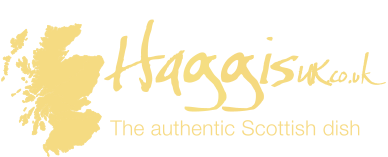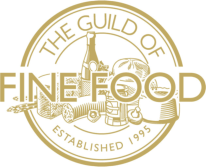Burns Night: A guide to holding a Burns Supper
Burns Night is a vibrant celebration of all things Scottish and is a popular event for Scots around the world. Chieftain haggis, whisky and poetry are the essentials, but for the full Burns Supper experience, there are plenty of rituals to be observed. If you would like to hold your own Burns Night, here is a quick step by step guide
First a little background …
Who was Robert Burns?
Robert Burns (1759-96) is Scotland’s most celebrated poet. During his short life he wrote a host of poems and songs about the human spirit, about nature, love, life and death that are as meaningful now as they were in Burns’ time. His greatest works give a unique and vivid insight into the aspirations and anguishes of the brotherhood of man and are considered by many to maintain their powerful meaning today.
Seven facts about Robert Burns from around the world
The tradition of the Burns Supper began as a group of Robert Burns’ friends meeting to commemorate his life and work every year on 21 July, the date of the poet’s death.
The first Burns club, founded by Ayrshire merchants, held a supper in 1802, on what they thought was Burns’ birthday – 29 January. By the following year they had established the actual date of his birth from parish records, and Burns suppers have been held on 25 January ever since.
Bagpipes and the Selkirk Address
The evening begins with the guests being piped in with bagpipes – real or recorded – and the supper itself kicks off with The Selkirk Grace – a prayer of thanks attributed to Burns, although it was well known before he recited it at a dinner given by the Earl of Selkirk in 1794. It reads
Some hae meat and canna eat,
And some wad eat that want it;
But we hae meat, and we can eat
Sae let the Lord be thankit.
Soup
The supper starts with soup – usually Scotch Broth or Cock-a-Leekie – and then it’s time for the main event: the haggi
Parade of the Chieftain Haggis
Presented with no shortage of ceremony, the chieftain haggis is traditionally piped in, on a silver salver carried by the cook, to a standing slow clap.
As it’s laid down, the host recites the “Address to a haggis”.
Fair fa’ your honest, sonsie face,
Great chieftain o the puddin’-race!
Aboon them a’ ye tak your place,
Painch, tripe, or thairm:
Weel are ye worthy o’ a grace
As lang’s my arm.
The groaning trencher there ye fill,
Your hurdies like a distant hill,
Your pin wad help to mend a mill
In time o need,
While thro your pores the dews distil
Like amber bead.
His knife see rustic Labour dight,
An cut you up wi ready slight,
Trenching your gushing entrails bright,
Like onie ditch;
And then, O what a glorious sight,
Warm-reekin, rich!
Then, horn for horn, they stretch an strive:
Deil tak the hindmost, on they drive,
Till a’ their weel-swall’d kytes belyve
Are bent like drums;
The auld Guidman, maist like to rive,
‘Bethankit’ hums.
Is there that owre his French ragout,
Or olio that wad staw a sow,
Or fricassee wad mak her spew
Wi perfect scunner,
Looks down wi sneering, scornfu view
On sic a dinner?
Poor devil! see him owre his trash,
As feckless as a wither’d rash,
His spindle shank a guid whip-lash,
His nieve a nit;
Thro bloody flood or field to dash,
O how unfit!
But mark the Rustic, haggis-fed,
The trembling earth resounds his tread,
Clap in his walie nieve a blade,
He’ll make it whissle;
An legs an arms, an heads will sned,
Like taps o thrissle.
Ye Pow’rs, wha mak mankind your care,
And dish them out their bill o fare,
Auld Scotland wants nae skinking ware
That jaups in luggies:
But, if ye wish her gratefu prayer,
Gie her a Haggis
(Read a translation of the poem Address to a Haggis here)
At the first line of the third verse, the speaker draws and sharpens (or mimes sharpening) a knife, and at the next line – “An’ cut you up wi’ ready slicht” – plunges it into the haggis and cuts it open from end to end. At the close of the recital the company toasts the haggis and then settles down to eat it.
The haggis is served with neeps and tatties (turnips and potatoes – both mashed), and while it may not please the purists, accompaniments like whisky cream sauce are often a welcome addition, as is the option of vegetarian haggis. Red wine goes well with haggis, as does Irn Bru (albeit for reasons of patriotism rather than flavour) for the non-drinkers.
Dessert
A Scottish dessert is in order, with cranachan, clootie dumpling and tipsy laird (whisky trifle with Scottish raspberries) going down well, followed by oatcakes and cheese, then coffee with shortbread or tablet.
Toasts
Speeches are made usually in praise of Robert Burns and there is a traditional Toast to the Lassies made by a male guest as thanks to the women in their lives. The reply toast comes when a woman will stand and reply to the previous toast, and thanking the speaker in an amusing way. She might also make a reference to Burns’ women and life.
Favourite poems and recitations usually follow including “Tam o’ Shanter”, “To A Mouse” and “Holy Willie’s Prayer”.
Finally, the night ends with everyone joining hands and singing “Auld Lang Syne”.
Happy Burns Night when it comes and wherever you’re celebrating,






